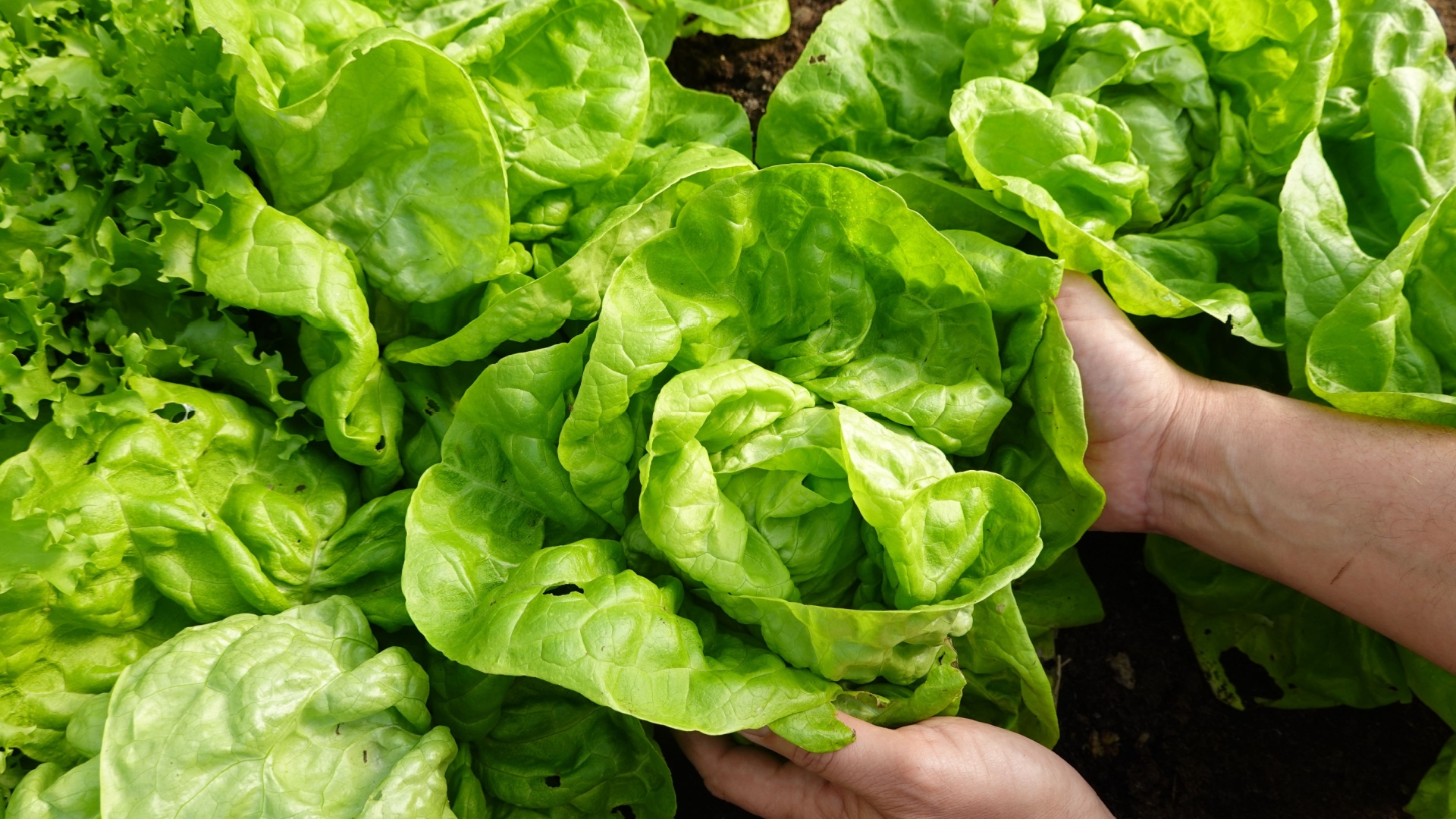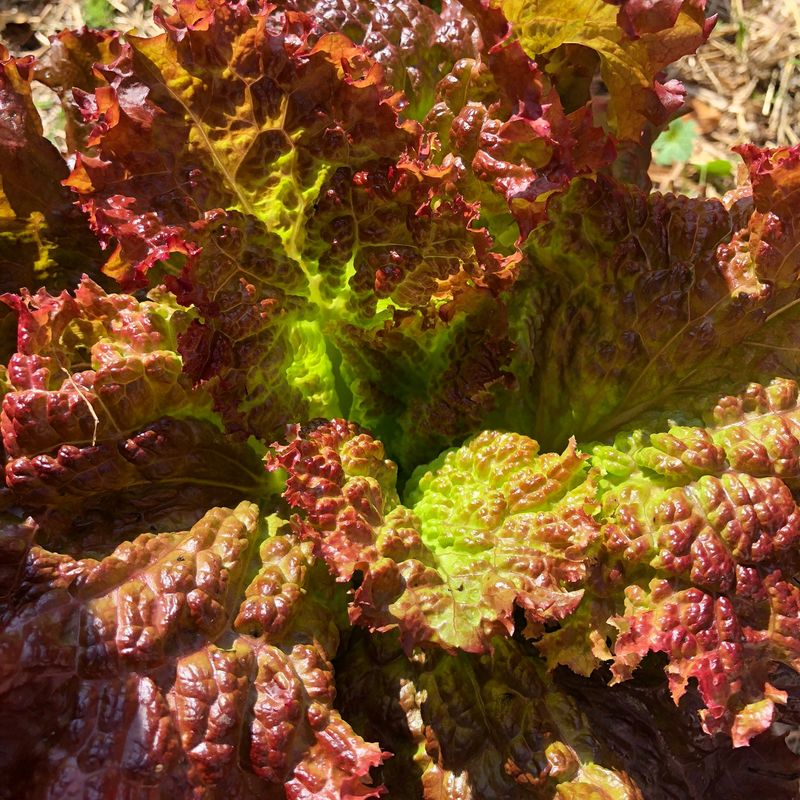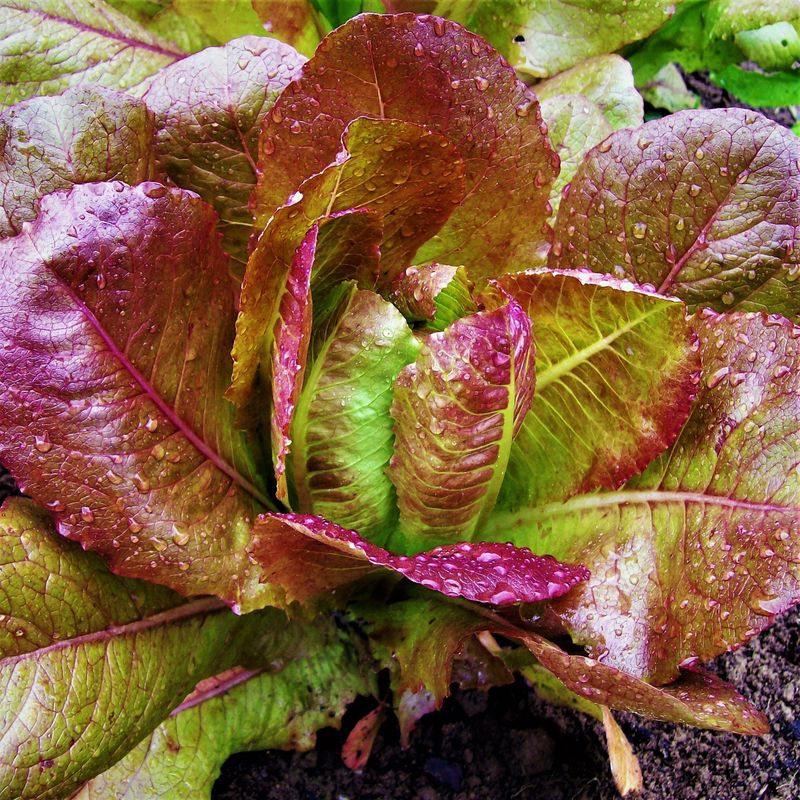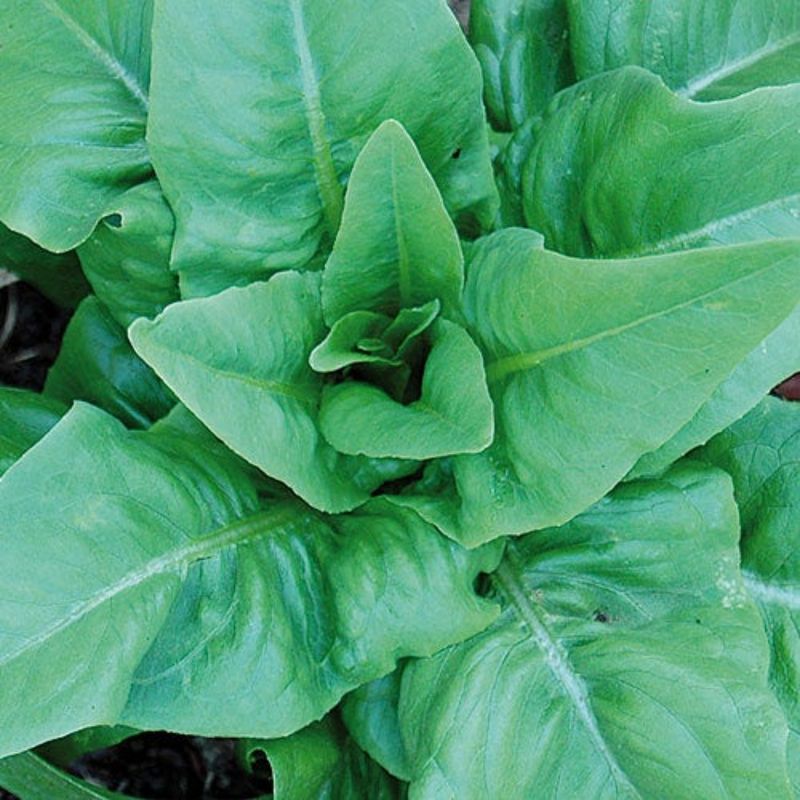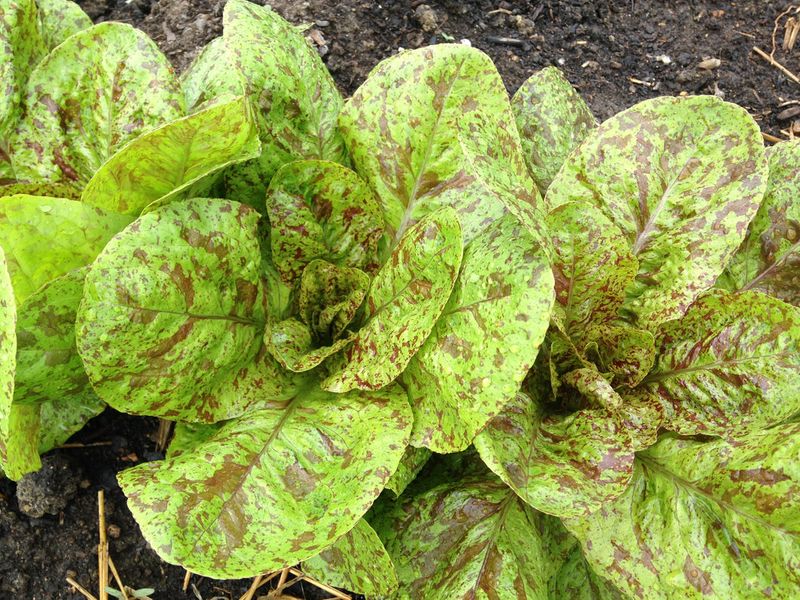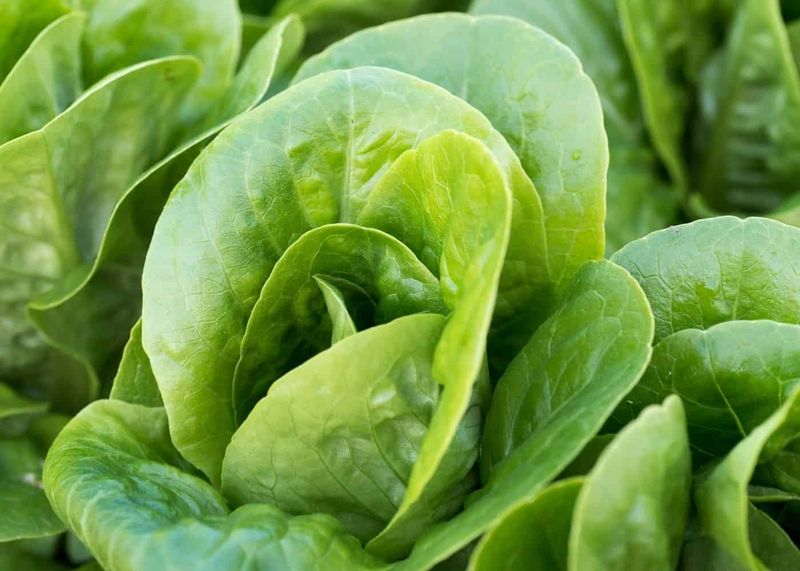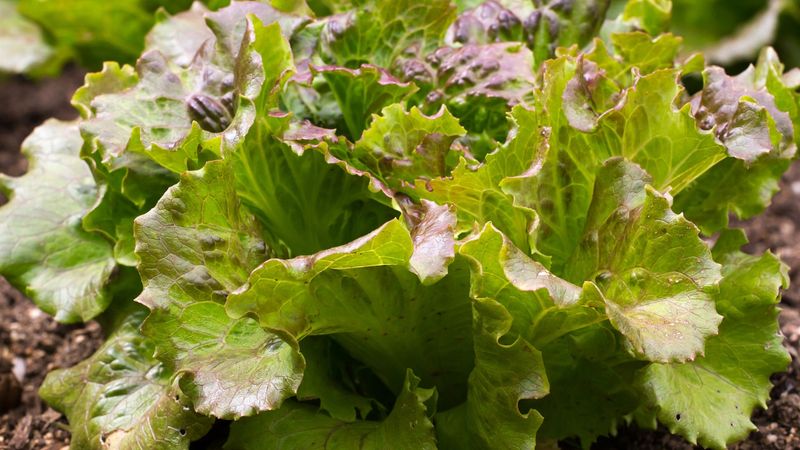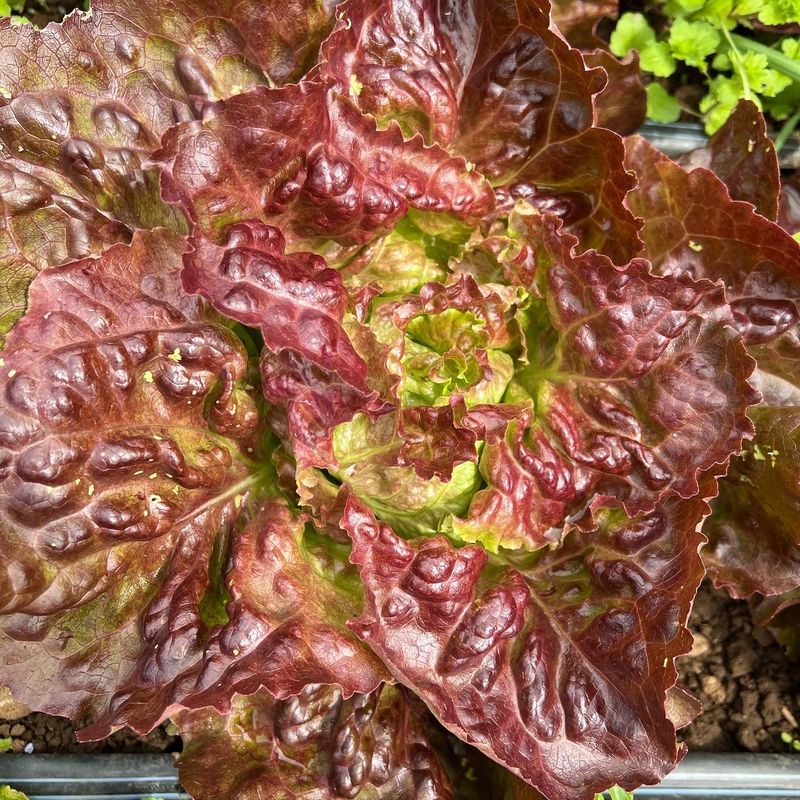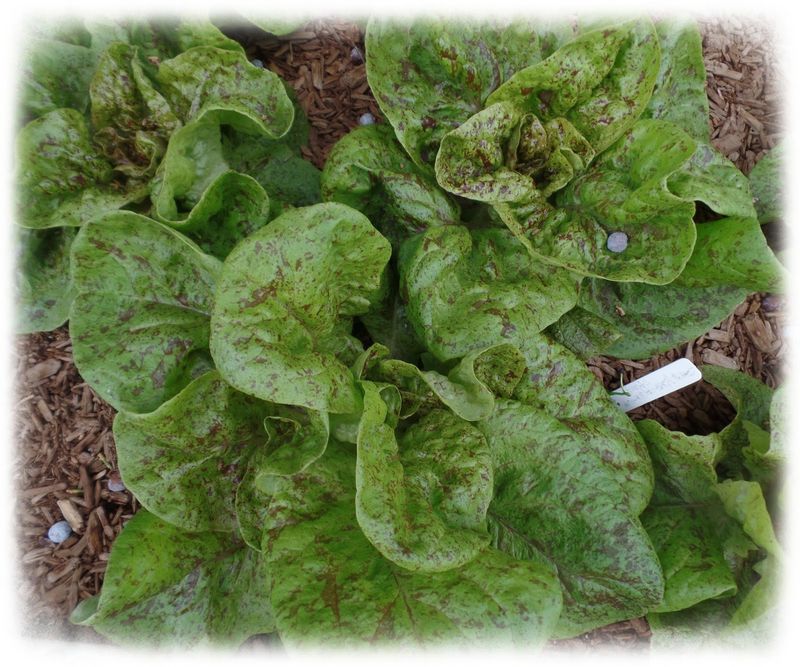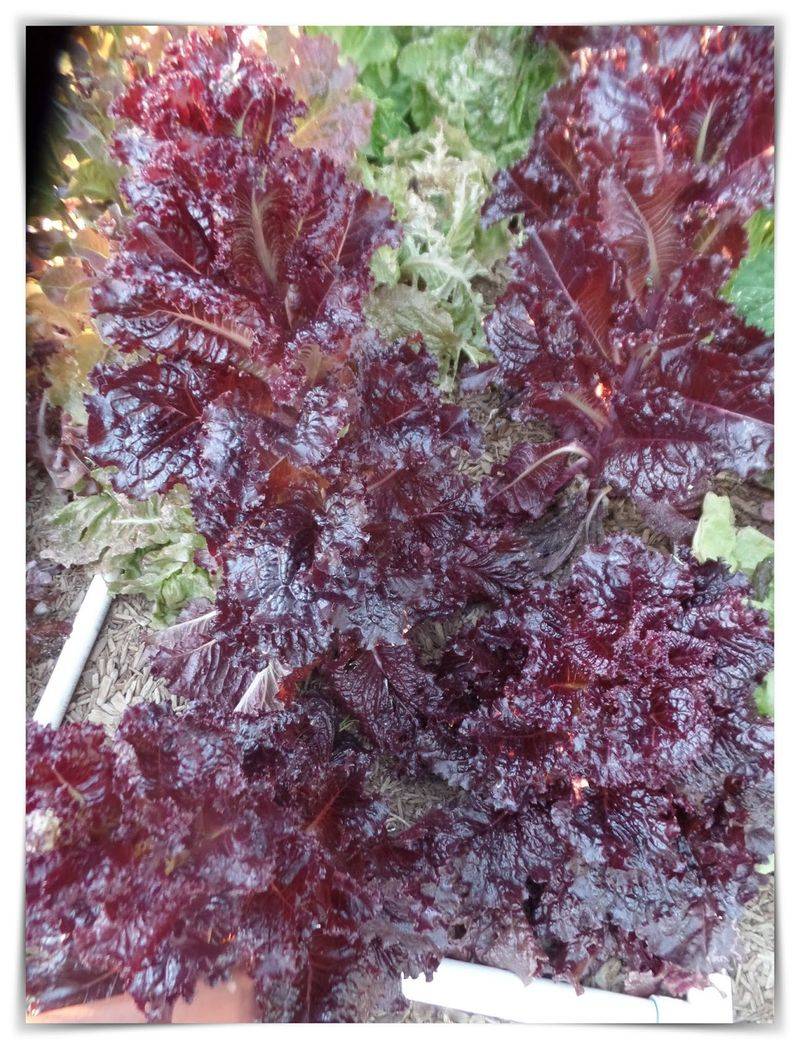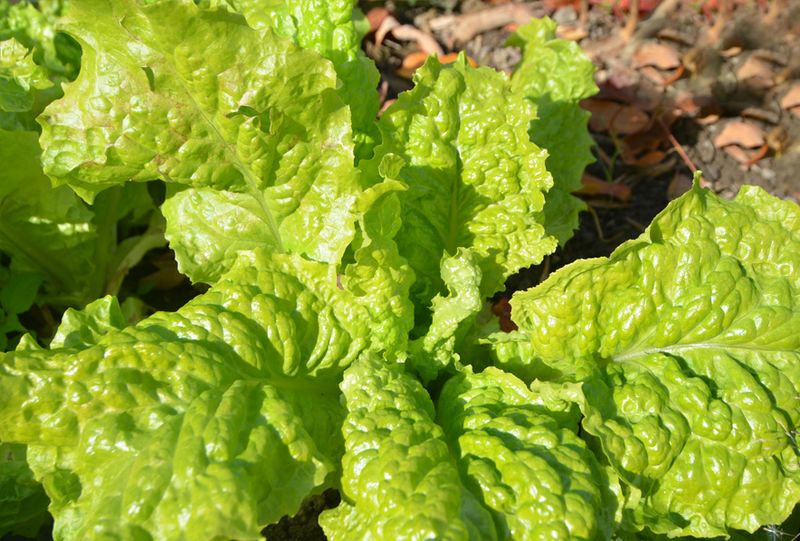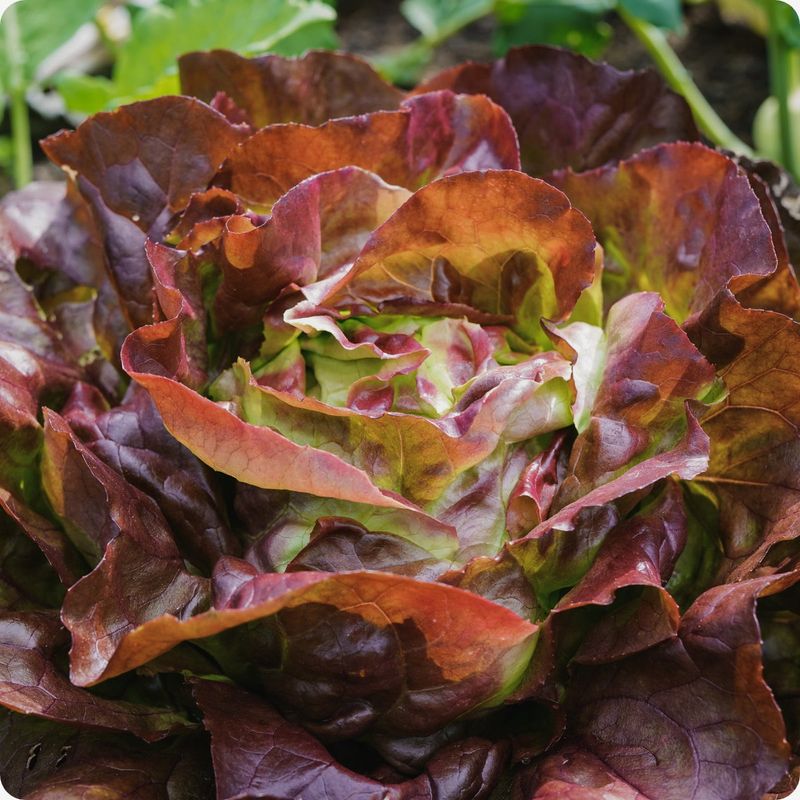There’s lettuce—and then there’s heirloom lettuce. Packed with color, texture, and rich flavor, these garden favorites offer so much more than your standard grocery-store greens. Handpicked by seasoned growers, these 15 heirloom varieties are not only easy to grow, they’re guaranteed to upgrade every summer salad you toss together.
From buttery leaves to bold red romaines, your garden—and your bowl—just got a whole lot tastier.
1. Buttercrunch Lettuce
Gardeners have treasured Buttercrunch since the 1960s for its sweet, buttery flavor and heat resistance. The compact heads feature dark green outer leaves that protect a creamy yellow heart.
Perfect for beginners, this variety matures in just 55-60 days but can be harvested earlier for baby greens. Its shallow root system makes it ideal for containers.
Unlike common grocery store lettuce, Buttercrunch holds well in summer heat without turning bitter, giving you a longer harvest window.
2. Lollo Rossa Lettuce
Stunning crimson-tipped frilly leaves make Lollo Rossa the showstopper of any garden. Originally from Italy, this loose-leaf variety adds both beauty and a mild, slightly bitter flavor to your salad bowl.
The deeply curled edges create perfect pockets for catching salad dressing. Many gardeners plant it in ornamental borders because it’s simply that gorgeous.
Harvest the outer leaves as needed while the plant continues growing from the center, providing weeks of fresh greens from a single plant.
3. Black Seeded Simpson Lettuce
American gardens have featured Black Seeded Simpson since the 1850s, making it one of the oldest heirloom lettuces still widely grown. The light green, crinkled leaves form loose, open heads that are incredibly easy to grow.
Ready to harvest in just 45 days, it’s often the first lettuce to grace spring salads. The tender leaves have a mild, non-bitter flavor even in warmer weather.
For gardeners in hot climates, this heat-tolerant variety is especially valuable, as it’s slower to bolt than many other lettuces.
4. Rouge d’Hiver Lettuce
From 19th century France comes this gorgeous romaine variety whose name means “Red of Winter.” The elongated leaves transition from green at the base to a deep bronzy-red at the tips, intensifying in color as temperatures drop.
Surprisingly cold-hardy, Rouge d’Hiver can be planted in late summer for fall and even winter harvests in milder climates. The crisp texture and nutty flavor improve after light frosts.
Unlike many lettuces, this variety performs well in both cool and warm seasons, making it a versatile choice for extended harvests.
5. Deer Tongue Lettuce
Named for its pointed leaves that resemble a deer’s tongue, this American heirloom dates back to the 1740s. The triangular, slightly fuzzy leaves grow in a loose rosette pattern with a delightful texture.
Don’t let its unusual appearance fool you – Deer Tongue offers a wonderfully sweet flavor with just a hint of nuttiness. The compact size makes it perfect for small gardens or containers.
Heritage farmers particularly value this variety for its resistance to disease and its ability to produce well even in poor soil conditions.
6. Amish Deer Tongue Lettuce
A treasured variety preserved by Amish communities, this unique lettuce features pointed leaves similar to the standard Deer Tongue but with more substantial texture. The dark green leaves form a semi-tight rosette that’s both beautiful and practical for harvesting.
Gardeners love its exceptional heat tolerance – it’s one of the last lettuces to bolt in summer. The robust flavor becomes more pronounced as the leaves mature.
Unlike many loose-leaf varieties, Amish Deer Tongue stores well after harvesting, maintaining its crisp texture in the refrigerator for over a week.
7. Forellenschluss Lettuce
Whose name means “speckled like a trout” in German, Forellenschluss is a visual marvel with its green leaves splashed with crimson speckles. This Austrian romaine variety dates back to the 1800s and grows into medium-sized heads with exceptional flavor.
The crisp, sweet leaves have substance without being tough. Many chefs consider it the perfect lettuce for Caesar salads.
Unlike common romaines, Forellenschluss tolerates both heat and cold remarkably well, extending your growing season significantly if planted in succession.
8. Tennis Ball Lettuce
Thomas Jefferson grew this charming butterhead lettuce at Monticello in the early 1800s. True to its name, Tennis Ball forms small, tender heads about the size of tennis balls with delightfully soft, buttery leaves.
The compact size makes it ideal for small-space gardens and succession planting. Its sweet flavor and tender texture made it extremely popular before refrigeration, as it could be grown in cool cellars.
Heritage seed savers particularly value this variety as one of America’s oldest documented lettuces, connecting modern gardeners to our agricultural history.
9. Little Gem Lettuce
Often called “sugar cos” in England, Little Gem is a miniature romaine that combines the best qualities of butterhead and romaine varieties. Each plant grows to just 6 inches tall, forming sweet, crunchy hearts perfect for individual salads.
The compact size means you can grow several plants in the space normally required for one full-sized lettuce. Many gourmet restaurants serve whole Little Gem hearts as a special treat.
Unlike larger lettuces, these little beauties mature quickly – often ready in just 35-40 days from planting.
10. Grandpa Admire’s Lettuce
Named for Civil War veteran George Admire who developed it in the 1800s, this gorgeous butterhead lettuce features bronze-tinged leaves with ruffled edges. The large, loose heads offer a wonderful mild flavor that never turns bitter, even in summer heat.
Gardeners in warm climates particularly treasure this variety for its exceptional heat resistance. The beautiful coloration intensifies as temperatures rise.
Unlike many heirlooms, Grandpa Admire’s has excellent disease resistance, making it easier to grow organically without pesticides.
11. Yugoslavian Red Lettuce
Saved by generations of Eastern European families, Yugoslavian Red creates a spectacular display in any garden. The large, loose heads feature vibrant apple-green leaves dramatically splashed with bright crimson.
The buttery texture and sweet flavor belie its bold appearance. As temperatures cool in fall, the red coloration becomes even more intense, creating a stunning display.
Market gardeners love this variety because a single head makes a statement at farmers’ markets. Even the stems have a rosy hue that adds color to mixed salads.
12. Speckled Bibb Lettuce
Sometimes called “Flashy Butter Oak,” this relatively recent heirloom (1980s) has quickly become a gardener’s favorite. The oak-leaf shaped leaves are light green splashed with burgundy speckles, forming loose, open heads.
The extraordinary tender texture makes it a standout in salads. Many gardeners report that it’s the first lettuce to disappear at family meals.
Unlike traditional Bibb varieties that struggle in heat, Speckled Bibb shows remarkable heat tolerance while maintaining its sweet, non-bitter flavor even when temperatures climb.
13. Mascara Lettuce
Relatively new to the heirloom scene, Mascara has quickly earned its place with stunning deep red-purple oak-leaf shaped leaves. The dramatic color extends throughout the entire leaf, not just the edges, creating a gorgeous display in both garden and salad bowl.
The flavor is surprisingly mild with no bitterness despite the dark coloration. The high anthocyanin content that creates the purple color also provides antioxidant benefits.
Home gardeners appreciate that Mascara is slow to bolt in summer heat, extending the harvest season by several weeks compared to other varieties.
14. Australian Yellow Lettuce
Rarely found in markets, this unusual heirloom features chartreuse-yellow leaves that brighten any salad mix. The loose, open heads have slightly savoyed (crinkled) leaves with delicate texture and mild, sweet flavor.
The distinctive color makes it especially valuable in mixed lettuce plantings. Children are often drawn to its sunny appearance and mild taste.
Gardeners in hot regions value Australian Yellow for its impressive heat tolerance – it was developed to withstand the intense Australian sun. Even in summer heat, it’s slow to bolt and resists turning bitter.
15. Merville Des Quatre Saisons Lettuce
With a name meaning “Marvel of Four Seasons,” this French heirloom from the 1800s lives up to its promise. The gorgeous butterhead forms medium-sized heads with bronze-red outer leaves surrounding a tender green heart.
French market gardeners have treasured it for generations because it can be grown year-round in mild climates. The flavor is exceptionally buttery with a hint of sweetness.
Unlike many lettuces that perform well only in spring or fall, this variety truly thrives across all four seasons, making it perfect for gardeners wanting continuous harvests.

